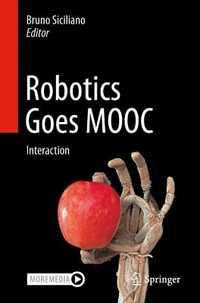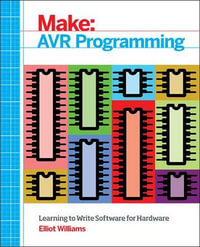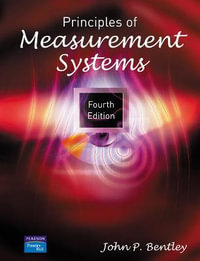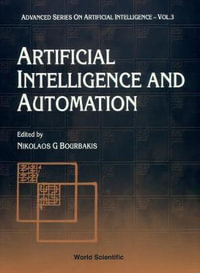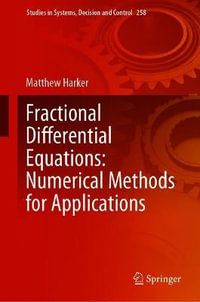| List of Abbreviations and Symbols | p. xviii |
| List of Contributors | p. xxiii |
| Direct Identification of Continuous-time Models from Sampled Data: Issues, Basic Solutions and Relevance | p. 1 |
| Introduction | p. 1 |
| System Identification Problem and Procedure | p. 2 |
| Basic Discrete-time Model Identification | p. 5 |
| Difference Equation Models | p. 5 |
| The Traditional Least Squares Method | p. 5 |
| Example: First-order Difference Equation | p. 6 |
| Models for the Measurement Noise | p. 7 |
| Issues in Direct Continuous-time Model Identification | p. 7 |
| Differential Equation Models | p. 7 |
| Input-Output Time Derivatives | p. 8 |
| Models for the Measurement Noise | p. 8 |
| Basic Direct Continuous-time Model Identification | p. 9 |
| The Traditional State-variable Filter Method | p. 9 |
| Example: First-order Differential Equation | p. 11 |
| Motivations for Identifying Continuous-time Models Directly from Sampled Data | p. 11 |
| Physical Insight into the System Properties | p. 12 |
| Preservation of a priori Knowledge | p. 12 |
| Inherent Data Filtering | p. 13 |
| Non-uniformly Sampled Data | p. 13 |
| Transformation between CT and DT Models | p. 13 |
| Sensitivity Problems of DT Models at High Sampling Rates | p. 14 |
| Stiff Systems | p. 14 |
| Specialised Topics in System Identification | p. 15 |
| Identification of the Model Structure | p. 15 |
| Identification of Pure Time (Transportation) Delay | p. 15 |
| Identification of Continuous-time Noise Models | p. 15 |
| Identification of Multi-variable Systems | p. 16 |
| Identification in Closed Loop | p. 16 |
| Identification in the Frequency Domain | p. 16 |
| Software for Continuous-time Model Identification | p. 16 |
| Historical Review | p. 16 |
| Outline of the Book | p. 20 |
| Main References | p. 25 |
| References | p. 26 |
| Estimation of Continuous-time Stochastic System Parameters | p. 31 |
| Background and Motivation | p. 31 |
| Modelling of Continuous-time Stochastic Systems | p. 33 |
| Sampling of Continuous-time Stochastic Models | p. 34 |
| Sampling of CARMA Systems | p. 35 |
| Sampling of Systems with Inputs | p. 37 |
| A General Approach to Estimation of Continuous-time Stochastic Models | p. 38 |
| Direct and Indirect Methods | p. 40 |
| Introductory Examples | p. 42 |
| Derivative Approximations for Direct Methods | p. 46 |
| Non-uniformly Sampled Data | p. 52 |
| The Cramér-Rao Bound | p. 54 |
| The Cramér-Rao Bound for Irregularly Sampled CARMA Models | p. 55 |
| Numerical Studies of Direct Methods | p. 58 |
| Conclusions | p. 62 |
| References | p. 63 |
| Robust Identification of Continuous-time Systems from Sampled Data | p. 67 |
| Overview | p. 68 |
| Limited-bandwidth Estimation | p. 69 |
| Frequency-domain Maximum Likelihood | p. 72 |
| Robust Continuous-time Model Identification | p. 75 |
| Effect of Sampling Zeros in Deterministic Systems | p. 75 |
| Effect of Sampling Zeros in Stochastic Systems | p. 79 |
| Continuous-time Undermodelling | p. 82 |
| Restricted-bandwidth FDML Estimation | p. 84 |
| Conclusions | p. 86 |
| References | p. 87 |
| Refined Instrumental Variable Identification of Continuous-time Hybrid Box-Jenkins Models | p. 91 |
| Introduction | p. 91 |
| Problem Formulation | p. 93 |
| Optimal RIVC Estimation: Theoretical Motivation | p. 96 |
| The Hybrid Box-Jenkins Estimation Model | p. 96 |
| RIVC Estimation | p. 97 |
| The RIVC and SRIVC Algorithms | p. 100 |
| The RIVC Algorithm | p. 100 |
| The SRIVC Algorithm | p. 101 |
| Multiple-input Systems | p. 103 |
| Non-uniformly Sampled Data | p. 103 |
| Theoretical Background and Statistical Properties of the RIVC Estimates | p. 104 |
| Optimality of RIVC Estimation | p. 104 |
| The Asymptotic Independence of the System and Noise Model Parameter Estimates | p. 105 |
| Model Order Identification | p. 108 |
| Simulation Examples | p. 109 |
| The Rao Garnier Test System | p. 109 |
| Noise-free Case | p. 110 |
| Noisy-output Case | p. 112 |
| Practical Examples | p. 119 |
| Hadley Centre Global Circulation Model (GCM) Data | p. 120 |
| A Multiple-input Winding Process | p. 122 |
| Conclusions | p. 127 |
| References | p. 129 |
| Instrumental Variable Methods for Closed-loop Continuous-time Model Identification | p. 133 |
| Introduction | p. 133 |
| Problem Formulation | p. 135 |
| Basic Instrumental Variable Estimators | p. 138 |
| Consistency Properties | p. 138 |
| Accuracy Analysis | p. 139 |
| Extended Instrumental Variable Estimators | p. 139 |
| Consistency Properties | p. 140 |
| Accuracy Analysis | p. 140 |
| Optimal Instrumental Variable Estimators | p. 140 |
| Main Results | p. 140 |
| Implementation Issues | p. 141 |
| Multi-step Approximate Implementations of the Optimal IV Estimate | p. 144 |
| Iterative Implementations of the Optimal IV Estimate | p. 147 |
| Summary | p. 152 |
| Numerical Examples | p. 153 |
| Example 1: White Noise | p. 154 |
| Example 2: Coloured Noise | p. 155 |
| Conclusions | p. 159 |
| References | p. 159 |
| Model Order Identification for Continuous-time Models | p. 161 |
| Introduction | p. 161 |
| Instrumental Variable Identification | p. 162 |
| Instrumental Variable Estimation using a Multiple-model Structure | p. 166 |
| Augmented Data Regressor | p. 166 |
| Instrumental Variable Solution Using UDV Factorisation | p. 168 |
| Computational Procedure | p. 172 |
| Model Structure Selection Using PRESS | p. 174 |
| Simulation Studies | p. 179 |
| Conclusions | p. 185 |
| References | p. 186 |
| Estimation of the Parameters of Continuous-time Systems Using Data Compression | p. 189 |
| Introduction | p. 189 |
| Data Compression Using Frequency-sampling Filters | p. 189 |
| FSF Model | p. 190 |
| FSF Model in Data Compression | p. 192 |
| Estimation Using FSF Structure | p. 195 |
| Data Compression with Constraints | p. 197 |
| Formulation of the Constraints | p. 197 |
| Solution of the Estimation Problem with Constraints | p. 198 |
| Monte Carlo Simulation Study | p. 199 |
| Physical-model-based Estimation | p. 201 |
| Example: Inverted Pendulum | p. 203 |
| FSF Estimation | p. 205 |
| PMB Estimation | p. 207 |
| Conclusions | p. 210 |
| References | p. 212 |
| Frequency-domain Approach to Continuous-time System Identification: Some Practical Aspects | p. 215 |
| Introduction | p. 215 |
| The Inter-sample Behaviour and the Measurement Setup | p. 216 |
| Plant Modelling | p. 216 |
| Noise Modelling | p. 220 |
| Summary | p. 222 |
| Parametric Models | p. 223 |
| Plant Models | p. 223 |
| Noise Models | p. 225 |
| Summary | p. 226 |
| The Stochastic Framework | p. 227 |
| Periodic Excitations | p. 227 |
| Arbitrary Excitations | p. 228 |
| Identification Methods | p. 229 |
| Asymptotic Properties of the Frequency-domain Gaussian Maximum Likelihood Estimators | p. 231 |
| Periodic Excitations | p. 231 |
| Arbitrary Excitations: Generalised Output Error | p. 234 |
| Arbitrary Excitations: Errors-in-variables | p. 236 |
| Real Measurement Examples | p. 237 |
| Operational Amplifier | p. 237 |
| Flight-flutter Analysis | p. 240 |
| Guidelines for Continuous-time Modelling | p. 241 |
| Prime Choice: Uniform Sampling, Band-limited Measurement Setup, Periodic Excitation | p. 241 |
| Second Choice: Uniform Sampling, Band-limited Measurement Setup, Arbitrary Excitation | p. 242 |
| Third Choice: Uniform Sampling, Zero-order-hold Measurement Setup | p. 242 |
| Last Resort: Non-uniform Sampling | p. 243 |
| To be Avoided | p. 243 |
| Conclusions | p. 243 |
| References | p. 243 |
| The CONTSID Toolbox: A Software Support for Data-based Continuous-time Modelling | p. 249 |
| Introduction | p. 249 |
| General Procedure for Continuous-time Model Identification | p. 250 |
| Overview of the CONTSID Toolbox | p. 250 |
| Parametric Model Estimation | p. 250 |
| Model Order Selection and Validation | p. 256 |
| Software Description | p. 260 |
| Introductory Example to the Command Mode | p. 261 |
| The Graphical User Interface | p. 267 |
| Advantages and Relevance of the CONTSID Toolbox Methods | p. 271 |
| Successful Application Examples | p. 275 |
| Complex Flexible Robot Arm | p. 275 |
| Uptake Kinetics of a Photosensitising Agent into Cancer Cells | p. 278 |
| Multi-variable Winding Process | p. 283 |
| Conclusions | p. 285 |
| References | p. 287 |
| Subspace-based Continuous-time Identification | p. 291 |
| Introduction | p. 291 |
| Problem Formulation | p. 292 |
| Discrete-time Measurements | p. 292 |
| Continuous-time State-space Linear System | p. 293 |
| System Identification Algorithms | p. 296 |
| Theoretical Remarks on the Algorithms | p. 299 |
| Numerical Example | p. 301 |
| Statistical Model Validation | p. 302 |
| Discussion | p. 306 |
| Conclusions | p. 308 |
| References | p. 309 |
| Process Parameter and Delay Estimation from Non-uniformly Sampled Data | p. 313 |
| Introduction | p. 313 |
| Estimation of Parameters and Delay | p. 315 |
| Second-order Modelling | p. 315 |
| Higher-order Modelling | p. 318 |
| Treatment of Initial Conditions | p. 320 |
| Parameter Estimation | p. 321 |
| Non-minimum Phase Processes | p. 323 |
| Choice of <$>\hat A_0(s)<$> and <$>\hat {\tau}_0<$> | p. 324 |
| Identification from Non-uniformly Sampled Data | p. 324 |
| The Iterative Prediction Algorithm | p. 324 |
| Input-only Modelling Using Basis-function Model | p. 325 |
| Choice of Basis-function Parameters | p. 327 |
| Criterion of Convergence | p. 328 |
| Simulation Results | p. 328 |
| Estimation from Uniformly Sampled Data | p. 329 |
| Estimation from Non-uniformly Sampled Data | p. 330 |
| Experimental Evaluation | p. 331 |
| Identification of a Dryer | p. 331 |
| Identification of a Mixing Process | p. 332 |
| Conclusions | p. 333 |
| References | p. 335 |
| Iterative Methods for Identification of Multiple-input Continuous-time Systems with Unknown Time Delays | p. 339 |
| Introduction | p. 339 |
| Statement of the Problem | p. 341 |
| Approximate Discrete-time Model Estimation | p. 342 |
| SEPNLS Method | p. 343 |
| GSEPNLS Method | p. 347 |
| GSEPNIV Method | p. 351 |
| Numerical Results | p. 355 |
| GSEPNLS Method in the Case of Low Measurement Noise | p. 357 |
| GSEPNIV Method | p. 358 |
| Conclusions | p. 360 |
| References | p. 361 |
| Closed-loop Parametric Identification for Continuous-time Linear Systems via New Algebraic Techniques | p. 363 |
| Introduction | p. 363 |
| A Module-theoretic Approach to Linear Systems: a Short Summary | p. 364 |
| Some Basic Facts about Modules over Principal Ideal Rings | p. 364 |
| Formal Laplace Transform | p. 365 |
| Basic System-theoretic Definitions | p. 366 |
| Transfer Matrices | p. 367 |
| Identifiability | p. 368 |
| Uncertain Parameters | p. 368 |
| The Algebraic Derivative and a New Module Structure | p. 368 |
| Linear Identifiability | p. 368 |
| An Elementary Example | p. 369 |
| Perturbations | p. 370 |
| Structured Perturbations | p. 370 |
| Unstructured Perturbations | p. 370 |
| Linear Identifier | p. 371 |
| Robustness | p. 371 |
| First Example: Dragging an Unknown Mass in Open Loop | p. 371 |
| Description and First Results | p. 371 |
| Denoising | p. 374 |
| A Comparison with an Adaptive-observer Approach | p. 376 |
| Second Example: A Perturbed First-order System | p. 377 |
| Presentation | p. 377 |
| A Certainty Equivalence Controller | p. 378 |
| Parameter Identification | p. 378 |
| Noise-free Simulation Results | p. 380 |
| Noisy Measurements and Plant Perturbations | p. 381 |
| Simulation Results with Noises | p. 381 |
| Comparison with Adaptive Control | p. 381 |
| Simulations for the Adaptive Scheme | p. 383 |
| Third Example: A Double-bridge Buck Converter | p. 383 |
| An Input-Output Model | p. 384 |
| Problem Formulation | p. 385 |
| A Certainty Equivalence Controller | p. 385 |
| Closed-loop Behaviour | p. 385 |
| Algebraic Determination of the Unknown Parameters | p. 386 |
| Simulation Results | p. 387 |
| Conclusion | p. 388 |
| References | p. 389 |
| Continuous-time Model Identification Using Spectrum Analysis with Passivity-preserving Model Reduction | p. 393 |
| Introduction | p. 393 |
| Preliminaries | p. 394 |
| Continuous-time Model Identification | p. 394 |
| Spectrum Analysis and Positivity | p. 396 |
| Spectral Factorisation and Positivity | p. 399 |
| Balanced Model Reduction | p. 399 |
| Problem Formulation | p. 400 |
| Main Results | p. 401 |
| Discussion | p. 405 |
| Conclusions | p. 406 |
| References | p. 406 |
| Index | p. 409 |
| Table of Contents provided by Publisher. All Rights Reserved. |


